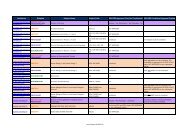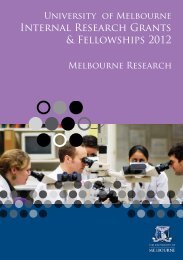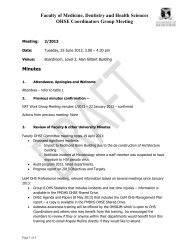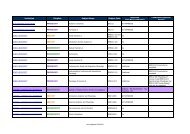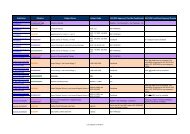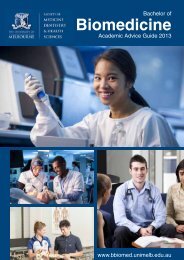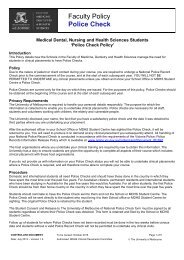A Body of Evidence: An Art Historical perspective on Eighteenth and ...
A Body of Evidence: An Art Historical perspective on Eighteenth and ...
A Body of Evidence: An Art Historical perspective on Eighteenth and ...
You also want an ePaper? Increase the reach of your titles
YUMPU automatically turns print PDFs into web optimized ePapers that Google loves.
Chapter One – The Emergence <str<strong>on</strong>g>of</str<strong>on</strong>g> <str<strong>on</strong>g>An</str<strong>on</strong>g>atomy.<br />
Prior to the Renaissance the most widely recognised text <strong>on</strong> anatomy was the<br />
work <str<strong>on</strong>g>of</str<strong>on</strong>g> Claudius Galen (c. 130- 200 AD) entitled On the use <str<strong>on</strong>g>of</str<strong>on</strong>g> the parts <str<strong>on</strong>g>of</str<strong>on</strong>g> the<br />
human body, which investigated human anatomy through studies carried out <strong>on</strong><br />
animals. 6 It is not known whether Galen’s text, which was transcribed from the<br />
original Greek first into Syriac <strong>and</strong> Arabic, <strong>and</strong> in the Renaissance into Latin, was<br />
originally illustrated. 7 Thirteenth-century anatomical illustrati<strong>on</strong> in European<br />
manuscripts were typically limited to representati<strong>on</strong>al diagrams that showed the<br />
body as a froglike form with arms <strong>and</strong> legs splayed, as can be seen in the<br />
example <str<strong>on</strong>g>of</str<strong>on</strong>g> medieval anatomical illustrati<strong>on</strong> in Fig. 4. Such illustrati<strong>on</strong> merely<br />
located the positi<strong>on</strong> <str<strong>on</strong>g>of</str<strong>on</strong>g> the organs rather than explaining their functi<strong>on</strong>s.<br />
During the Renaissance, anatomy was studied in a number <str<strong>on</strong>g>of</str<strong>on</strong>g> disciplines. In the<br />
fifteenth century artists <strong>and</strong> scholars explored the theories <str<strong>on</strong>g>of</str<strong>on</strong>g> Greek<br />
philosophers such as Empedocles <strong>and</strong> Plato, who had argued that the human<br />
body was a microcosm, or lesser world, which replicated the macrocosm <str<strong>on</strong>g>of</str<strong>on</strong>g> the<br />
universe. 8 Scholars studied the nature <str<strong>on</strong>g>of</str<strong>on</strong>g> the world to find patterns that were<br />
repeated in science, music, architecture <strong>and</strong> art. 9 . The underlying principles <str<strong>on</strong>g>of</str<strong>on</strong>g><br />
6 Galen was a Greek physician from Pergam<strong>on</strong> who practiced medicine <strong>and</strong> wrote about anatomy. He later<br />
moved via Alex<strong>and</strong>ria to Rome where he became the physician for the Emperors Marcus Aurelius <strong>and</strong><br />
Commodus. Under Roman rule dissecti<strong>on</strong> <str<strong>on</strong>g>of</str<strong>on</strong>g> cadavers was forbidden therefore many <str<strong>on</strong>g>of</str<strong>on</strong>g> his observati<strong>on</strong>s<br />
were based <strong>on</strong> animals close to humans such as Barbary apes. Cunningham, 1997, p. 27.<br />
7 Choulant, 1945, p. 21a.<br />
8 For a detailed account <str<strong>on</strong>g>of</str<strong>on</strong>g> the history <str<strong>on</strong>g>of</str<strong>on</strong>g> these ideas see Barkan, 1975, pp. 8-60.<br />
9 Kemp, 1981, p. 104.



